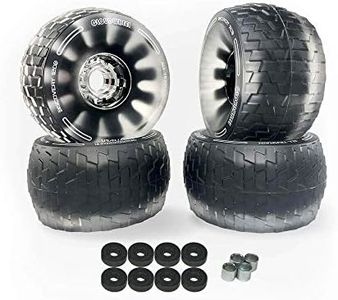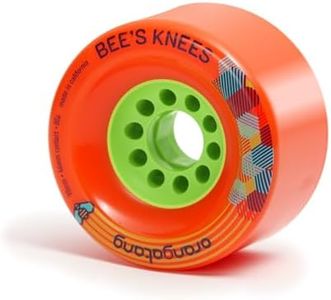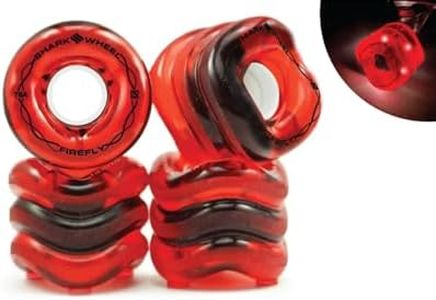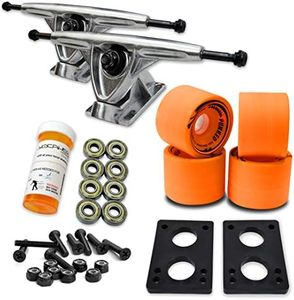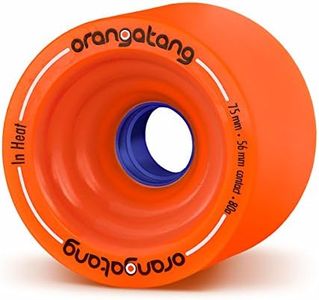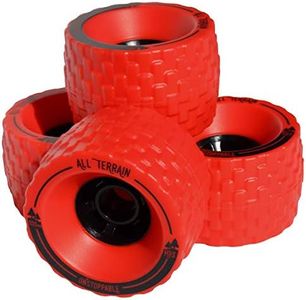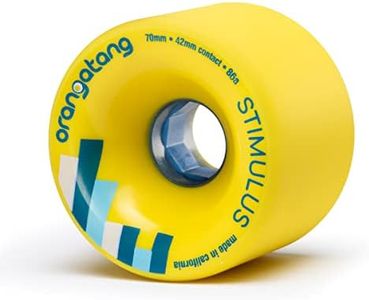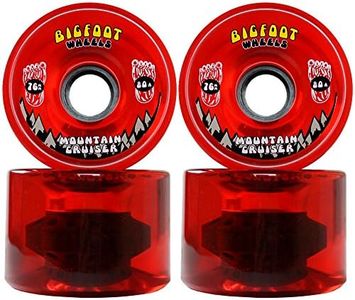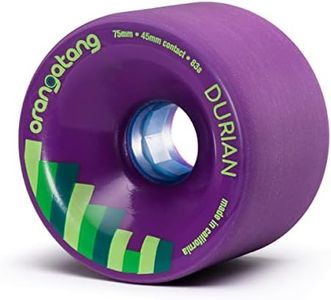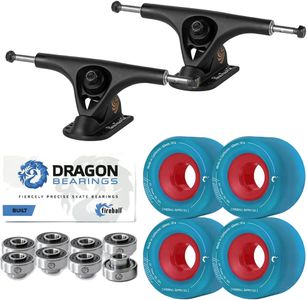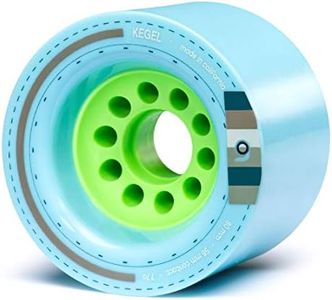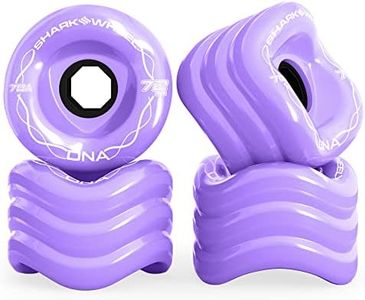We Use CookiesWe use cookies to enhance the security, performance,
functionality and for analytical and promotional activities. By continuing to browse this site you
are agreeing to our privacy policy
10 Best Longboard Wheels
From leading brands and best sellers available on the web.Buying Guide for the Best Longboard Wheels
Choosing the right longboard wheels can transform your ride and ensure the board matches what you want to do, whether it’s cruising, downhill racing, or doing tricks. The choice of wheels affects how smoothly your board rolls, how much grip you have, and how easy it is to slide. To make the best choice, think about where you plan to ride most (rough pavement, smooth paths, hills), the style of longboarding you enjoy, and your personal preferences for speed versus control.Diameter (Size)Diameter refers to the height of the wheel from edge to edge, usually measured in millimeters. Wheel size is important because it affects your speed and how easily you roll over cracks and bumps. Smaller wheels (around 60-65mm) are great for tricks and quick acceleration but don't handle rough surfaces as smoothly. Medium wheels (66-70mm) offer a balance between speed and maneuverability and suit general cruising or commuting. Larger wheels (71mm and up) provide more speed and roll over obstacles easily, making them best for downhill riding or rough terrain. Consider your primary riding environment and style—the rougher the surface or the faster you want to go, the bigger your wheels should be.
Durometer (Hardness)Durometer measures how hard or soft a wheel is, with most wheels using the 'A scale.' This is key because hardness affects grip and sliding ability. Softer wheels (78A-83A) give better grip and a smoother ride on rougher ground, perfect for cruising and downhill where you want control. Harder wheels (84A and higher) are more likely to slide and work well for tricks or riding on smooth surfaces. If comfort and grip are important to you, pick a softer wheel. If you want to slide or ride primarily on smooth pavement, go harder.
Wheel Shape (Profile and Lip Shape)Wheel shape refers to the overall profile, including how square or rounded the edges (lips) are. Square-lipped wheels grip the road better, making them ideal for downhill and carving because they hold turns well. Rounded-lip wheels break into slides more easily, which is preferred by those who love freeride or doing slides. Choose square lips for maximum grip and smoother cornering, and rounded for easier sliding action.
Contact PatchThe contact patch is the part of the wheel that actually touches the ground. A wider contact patch means more grip and more predictable turning, which helps if you’re going downhill or want a stable ride. A narrower contact patch creates less friction, making it easier to slide, which is better for tricks and freestyle riding. If you’re just starting out or value stability and grip, opt for a wider contact patch. If you prioritize sliding and a looser feel, a narrower patch might suit you.
Wheel Core PlacementThis refers to where the core is placed in the wheel: centerset (middle), sideset (near the inner edge), or offset (between the middle and edge). Centerset wheels offer even wear and more grip, while sideset wheels slide easily with less resistance. Offset is a middle ground, giving some grip but still easy to break into a slide. For maximum grip and longer life, go centerset; if you want easier slides, try sideset; if you want a little of both, offset is a good compromise.
Wheel Material (Urethane Quality)Most longboard wheels are made from urethane, but the quality can make a big difference in grip, durability, and ride feel. Higher quality urethane provides better rebound (energy return), smoother ride, and lasts longer. Poorer quality may save money but tends to wear out faster, feel less grippy, and ride more harshly. While it's tough to judge quality perfectly without riding, reviews and trusted brands often indicate better urethane. If you want a consistently good ride and longer-lasting wheels, prioritize recognized quality in the urethane.
